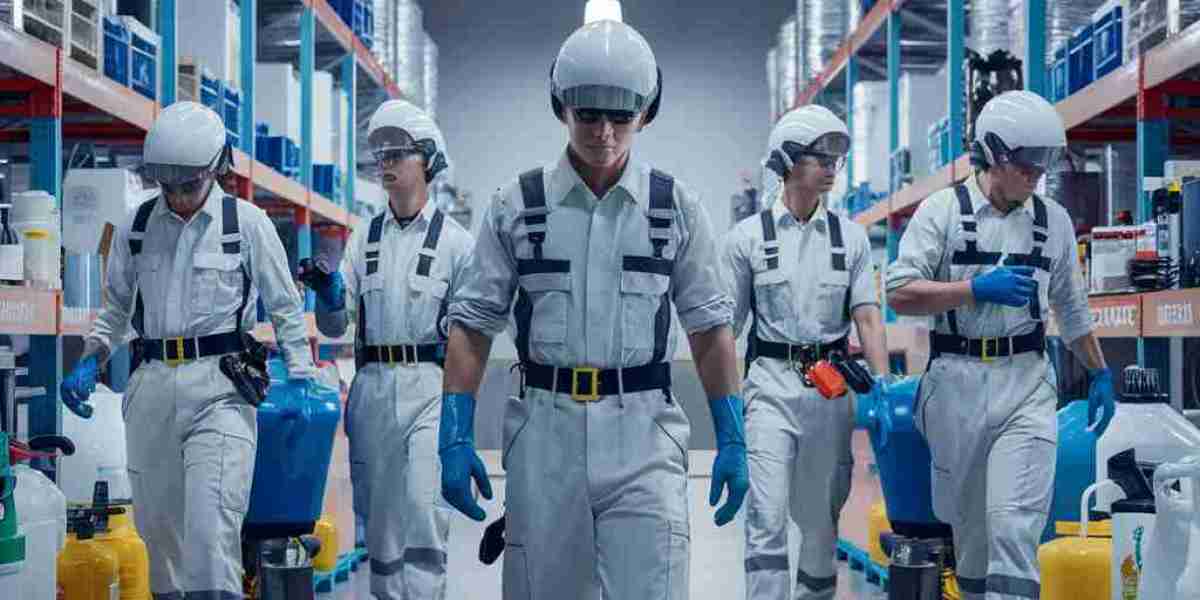Introduction
Pest control is not just about spraying insecticide — it’s about protecting health, assets, reputation, and compliance. For businesses, commercial pest control is a strategic necessity.
1. What Is Commercial Pest Control — And How It Differs from Residential?
Commercial pest control refers to pest management services tailored for businesses, institutions, or large-scale facilities — not individual homes or apartments. While the core goal (keeping pests out) is the same, the scale, risk profile, methods, regulations, and expectations differ significantly.
Here are the main distinctions:
Scale & Complexity
Commercial facilities (offices, warehouses, restaurants, hotels, manufacturing plants) are larger and more complex than homes. They often have multiple zones, specialized areas (food prep, storage, loading docks), and more potential pest entry points.
Because of that, inspection, treatment, and monitoring must cover more extensive areas and must be more systematically planned.
Speed, Disruption & Sensitivity
Businesses often can’t shut down for long. Pest control in a restaurant or retail store must be fast, discreet, and scheduled during off-peak hours or after closing time to minimize disruption.
Residential services may allow for more leeway (e.g. treating when occupants are away) but commercial settings cannot risk long downtime.
Commercial vendors are expected to respond more rapidly when issues arise, to avoid business or compliance risks.
Custom Plans & Preventive Focus
Commercial pest control providers usually design customized integrated pest management (IPM) plans. They consider traffic flow, structural weaknesses, waste disposal areas, HVAC systems, and facility-specific vulnerabilities.
Preventive measures (sealing gaps, monitoring traps, scheduled inspections) are more critical in commercial settings.
Residential pest control is often more standardized and reactive — a homeowner may call when there is a noticeable problem; commercial clients often insist on a regular plan.
Regulatory & Compliance Requirements
Commercial businesses, especially in sectors like food service, healthcare, hospitality, and manufacturing, must adhere to health department or FDA/USDA regulations, local health codes, and safety rules.
Pesticide use, documentation, safety protocols, and recordkeeping are more strictly regulated in commercial settings.
Violations or pest-related compliance failures can lead to fines, shutdowns, or reputational damage.
Pest Types & Risk Exposure
Commercial facilities frequently deal with pests more associated with food, waste, structural damage, or disease transmission — rodents, cockroaches, flies, stored-product pests, etc.
Some pests common in homes (bed bugs, ants, spiders) still appear, but commercial settings may see broader pest spectra due to larger operations, deliveries, waste, and more “traffic” from outside sources.
In short: commercial pest control is more complex, regulated, proactive, and business-critical than residential pest control.
2. Why Pest Control Is Important for Businesses
Here are the top reasons businesses need robust pest control:
Protecting Reputation & Brand
A single sighting of a rodent or cockroach can damage customer trust — especially for restaurants, hotels, retailers, or food manufacturers. Social media and review platforms amplify reputational risk.
Health, Safety & Legal Liability
Pests carry pathogens (e.g. Salmonella, E. coli, hantavirus), allergens, and can contaminate food or surfaces. Businesses may face liability from illnesses, health code violations, or worker safety issues.
Commercial pest control is integral to public health compliance.
Avoiding Regulatory Sanctions
Food safety inspections, health department audits, and industry regulators often require proof of pest control plans. Noncompliance can lead to fines, closure, or loss of permits.
Preventing Property & Asset Damage
Rodents chew wires, insulation, packaging, or structural components. Termites or wood-destroying insects cause costly structural damage. Left uncontrolled, pests lead to expensive repairs or downtime.
Cost Savings in the Long Run
Catching infestations early is far cheaper than resolving full-blown ones. Proactive pest control helps avoid high elimination costs, damage repair, inventory losses, or business interruptions.
Minimizing Disruption
With a good plan, pest control can occur discreetly during off-hours. Without it, sudden infestations force emergency interventions that disrupt operations.
Supporting Employee & Customer Confidence
A clean, pest-free environment contributes to morale, customer comfort, and trust. It’s part of maintaining professionalism and hygiene standards.
3. How Often Should Commercial Properties Schedule Pest Control?
There’s no one-size-fits-all schedule — ideal frequency depends on multiple variables. However, common guidelines and influencing factors offer a good starting point.
Key Factors That Influence Frequency
Type of business / risk level
A restaurant, bakery, or food processing facility poses high risk and often requires monthly or even biweekly service.
Retail stores, office buildings, or low-risk facilities often use a quarterly schedule.
Warehouses or storage facilities might fall somewhere in between, depending on what’s stored.
Past infestation history
Locations with recurring pest problems often require more frequent visits.
Geographical location & climate
Regions with warm, humid weather or adjacent to forests, waterways, or agricultural areas tend to have higher pest pressure.
Building condition & age
Older buildings with cracks, gaps, damaged seals, or structural weaknesses invite pests and need more frequent inspection.
Foot traffic, deliveries & external exposure
Frequent deliveries, open docks, unloading doors, employee traffic — all these invite opportunities for pests, increasing needed frequency.
Regulatory or industry mandates
Health codes or industry standards may mandate minimum inspection frequency for establishments like food service, hospitals, or labs.
Typical Frequency Ranges
Monthly / biweekly for high-risk facilities like restaurants, food manufacturing, or healthcare kitchens.
Quarterly for retail stores, office buildings, schools, warehouses with low-risk inventory.
Semi-annual or annual (with supplemental inspections) only in low-risk settings — but this is rare for commercial settings.
Some guidance suggests retail spaces often benefit from pest control every three months.
Others advise that high-risk businesses may need monthly or more frequent checkups.
Importantly, pest control should not be reactive only — rather, regular preventive visits are essential to catch issues early, plug vulnerabilities, and avert infestations.
4. Which Industries Require Commercial Pest Control the Most?
While virtually any business can benefit from pest control, some sectors are especially vulnerable due to their functions, exposure to food, or regulatory obligations. Here are prime candidates:
Food & Beverage / Restaurants / Cafeterias
This is perhaps the top sector needing rigorous pest control. They handle ingredients, waste, open food, and thus have high risk of contamination or infestation.
Food Processing, Storage & Distribution Centers
Facilities storing grains, packaged foods, or ingredients are targets for stored-product pests (weevils, beetles, moths), rodents, and pests that compromise goods.
Hospitality & Lodging (Hotels, Motels)
Guests expect high hygiene standards. Bed bugs, rodents, insects, and general pest control are critical to preserving reputation.
Healthcare & Medical Facilities
In hospitals or clinics, pest control is critical not only for compliance but for protecting immunocompromised patients, sterile zones, and sensitive operations.
Retail & Grocery Stores
Food aisles, storage rooms, consumer traffic, and deliveries make retail settings susceptible to pest intrusion.
Warehouses & Distribution Centers
Large volumes of goods, pallet stacks, loading docks, and open transit doors present many vulnerabilities.
Schools, Daycares, Offices
Though lower-risk compared to food sectors, pests still pose health and reputational risks, and many institutions have regulations or guidelines about cleanliness.
Agriculture, Nurseries & Storage Facilities
Plants, produce, soil, and related materials attract pests; integrated pest control is vital in these settings.
Property Management / Multi-tenant Buildings
Apartment complexes, malls, or mixed-use properties benefit from commercial-grade pest control to maintain common areas, reduce tenant complaints, and preserve property value.
Because these industries interact with food, customers, public health, or high traffic, pest control isn’t optional — it’s a foundational service.
5. Common Pests in Commercial Buildings
Commercial facilities face a broad pest spectrum. Below are some of the most frequently encountered pests and considerations for each:
Rodents (Rats, Mice)
Highly mobile, reproduce quickly, chew wiring, spread disease, contaminate surfaces.
Look for droppings, gnaw marks, nests, grease marks along walls, and footprints.
Cockroaches
Thrive in damp, dark places (kitchens, drains, utility rooms).
They can spread bacteria and allergens, and are often used as health code violation indicators.
Flies (House flies, Fruit flies, Drain flies)
These pests contaminate food or surfaces and attract attention.
Frequently come via open doors, garbage areas, drains, or broken screens.
Ants
Some species invade kitchens, pantries, or break rooms searching for food or water.
Difficult to eliminate due to colony structure.
Stored-product pests (Beetles, Moths, Weevils)
Infest packaged food, grains, cereals, flour, dried goods.
Can multiply within packaging or storage areas.
Spiders & Webbing Insects
While not always health threats, they create negative impressions and can harbor other pests.
Termites & Wood-destroying Insects
In older structures or those with wooden framing, termites or wood boring insects can cause structural damage.
Bed Bugs
More common in lodging, motels, dormitories; can spread via guests’ luggage.
Birds & Pigeons
In outdoor areas, rooftops, loading docks — birds can cause droppings, damage, nesting issues, and vector disease.
Stored Product Moths
Infest dry goods like grains, spices, flour, dried fruits.
Other Insects (Silverfish, Roaches, Wasps, Bees)
Utility rooms, packaging areas, attics, warehouses may host such pests.
Each pest type has its own behavior, life cycle, hiding spots, and treatment protocols — which is why a commercial plan must tailor solutions to the facility’s pest profile.
6. Best Practices & Key Components of Effective Commercial Pest Control
To ensure your commercial property is protected, here are best practices to look for or include in your plan:
Integrated Pest Management (IPM) Approach
Use a layered approach combining inspection, monitoring, exclusion, sanitation, mechanical controls, biological controls, and targeted chemical interventions.
Reduce reliance on widespread spraying; focus on prevention and strategic treatment.
Regular Inspections & Monitoring
Trap stations, bait stations, visual inspections, sensor systems — enable early detection before infestations escalate.
Often done monthly or quarterly depending on risk.
Facility Sealing & Exclusion
Seal cracks, gaps, utility penetrations, door sweeps, pipe chases.
Maintain physical barriers to prevent pest ingress.
Sanitation & Housekeeping
Proper waste management, cleanliness, removal of food debris, regular cleaning of drains — these reduce attractants.
Employee training for maintaining cleanliness and “pest aware” habits.
Documentation & Reporting
Service records, site maps, pest logs, monitoring data, corrective actions — critical for audits, compliance, and accountability.
Safety & Regulatory Compliance
Use EPA-registered pesticides, follow label instructions, maintain safety data sheets (SDS), restrict access during treatment, follow worker safety protocols.
Ensure staff are licensed and trained per state/local laws.
Tailoring to Specific Zones
Kitchens, storage rooms, HVAC, shipping/receiving, restrooms, dumpsters — each zone may need unique treatment or preventative strategy.
Scheduled Preventive Treatments
Even in absence of pests, scheduled treatments help maintain barrier protection.
Use rotating treatment modes where possible to prevent resistance development.
Rapid Response Capability
The vendor should respond quickly to any signs of infestation or customer complaint.
7. Summary & Takeaway
Commercial pest control is not just “spraying bugs” — it’s a crucial, strategic service for businesses. Its scale, urgency, regulatory burden, and reputational stakes make it markedly different from residential pest control.
Key points:
Commercial pest control handles larger, more complex facilities and must be faster, more customized, and less disruptive.
Businesses need effective pest control to protect reputation, ensure health and safety compliance, and avoid costly damage or shutdowns.
Frequency depends on business type, risk, past pest history, location, and structure; high-risk sectors need monthly or biweekly programs, many others quarterly.
Industries that handle food, lodging, healthcare, retail, warehousing, or property management are especially vulnerable.
Rodents, cockroaches, flies, ants, stored-product pests, termites, and more are common threats in commercial settings.
The best commercial pest control plans use IPM, proactive inspections, exclusion work, documentation, and compliance-driven protocols.





